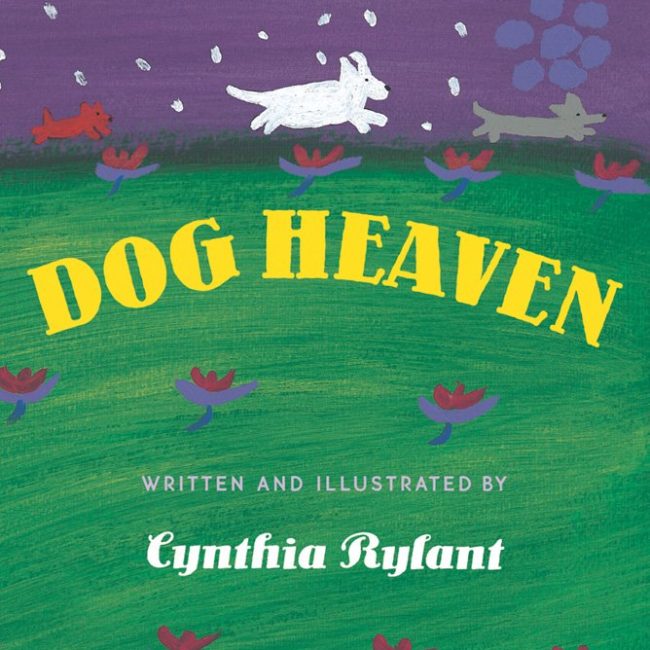
We all want our pets to live long, healthy lives. This is why we provide our furry family members with good nutrition, regular exercise, and quality veterinary care. But inevitably, our cats and dogs will age or become terminally ill, and then it’s time to face tough choices about the end-of-life measures we must take. When we know what to expect and the kinds of questions to ask, the hard choices become less difficult to make.

At Geary Veterinary Hospital, our goal is to offer your pets the best medical care, throughout their lives. We can also be there for your pets at the end. As veterinarians, we believe euthanasia is a humane way of allowing an animal in failing health to have a painless death. But we also understand that the very idea of putting down a pet can make people uncomfortable and upset. We hope the information presented here will help ease these feelings and the grieving process, too.
In our practice, we’ve met so many loving and dedicated pet owners. And we’ve learned that our clients have mixed feelings about euthanasia versus allowing a pet to have a “natural death.” They may see a natural death as more humane, the right thing to do, or “what the pet would want.” We understand these thoughts. We have grappled with the same ones and faced the painful emotions that accompany a pet’s death.
Every day, and sometimes multiple times a day, Dr. Weiss answers the question, “How do I know it’s time?” Recently, she faced making that decision for two of her own elderly cats, Giacomo and Elsa. In her words, “It was really tough, and I suddenly forgot all of the advice I usually give to clients. I kept asking myself: Is today the right day? Tomorrow? When will I know? Meanwhile, I noticed that Elsa stopped greeting me when I got home from work, just staying in her hiding spot. She also stopped eating. Before that, Giacomo wasn’t able to hold down any food, and the look in his eyes told me he felt awful. I realized that my cherished cats weren’t going to get better—it was time to say good-bye. I was fortunate that I could euthanize them myself at home in their familiar surroundings and with their family nearby. After these experiences, I reflected on what it must be like for our Geary clients to drive to our clinic, enter an exam room, and be met with familiar faces (but in some cases new faces), and then later leave without their beloved family pet by their side or in their arms. I felt certain that clients must wonder what happens to their pet’s body afterward. Going through my cats’ euthanasia and grieving the loss has made me appreciate even more the difficult process that our clients face themselves.”

Veterinarians know that pets are good at hiding their pain. But some pet owners may not realize the extent of the pain and weakness an animal is experiencing. Clients tell us, “My dog still wags his tail” or “My cat still purrs—that means she’s doing okay, right?” These little signs offer a sense of hope. But remember, many dogs act stoic in the face of suffering. Cats may purr when anxious. And guinea pigs naturally hide their pain or fragility because they are prey animals. Often, a pet owner may unintentionally wait too long to make the decision to euthanize.

Perhaps, like Dr. Weiss, you have a pet with a terminal illness, one that cannot be cured but perhaps can be successfully managed for a period of time. Geary Veterinary Hospital will help your pet with palliative care: nutrition, hydration, mobility aid, and the ease of pain and nausea. We want to increase your pet’s comfort as you prepare to let your pet go.
A Decision Tool to Help Pet Owners
Veterinarian Dr. Alice Villalobos, a graduate of UC Davis and an oncology veterinarian in Hermosa Beach, has spent her career helping pet owners better understand end-of-life issues. She has developed a decision-making tool, a seven-point scale to help people rate their pet’s health and quality of life. (Often called the HHHHHMM scale.) Take a look at your own pet and, on a scale of zero to ten—with zero indicating poor and ten indicating best—rate your pet’s situation and write the numbers down:

Photo courtesy of Center for Dog Pain Relief
HURT
Is your pet’s pain being managed? Does your pet breathe with ease or distress?
Hunger
Is your pet eating enough? Does hand-feeding provide better results?
Hydration
Is your pet dehydrated? (Look for sunken eyes, loss of skin elasticity, dry nose and gums.)
Hygiene
Can your pet clean its own face and fur? Are bed sores present?
Happiness
Does your pet express interest?
Mobility
Can your pet get up unassisted? Do you see stumbling? Weakness?
More
Does your pet have more good days than bad? Is a bond with you still possible?
As you use this scale, feel free to contact us at Geary about your pet’s health and well-being. We can look at your pet’s medical charts and help you to improve the quality of life in each category, until you’re ready to take the next step.
What Happens During Euthanasia?
Euthanasia is a medical procedure in which a veterinarian stops a pet’s heartbeat and breathing, painlessly. You may call and set up an appointment in advance. If you make the decision to entrust us with the end-of-life care your pet needs, please know that we will work with you to know when it’s the best time to say good-bye. We do our best to ensure your pet is in good hands.
Our goal is to have at least one family member present for your pet’s euthanasia, but you can bring additional family members as well. We aim to take great care with the procedure and to provide comfort and love.
First, we will set you and your pet up in a quiet room, making you both as comfortable as we can. The doctor gives an IV injection of a sedative to calm the pet. Your pet will still breathe but will not be responsive at this point. We will give you the time and opportunity to touch and talk to your pet throughout the procedure. When you are ready will we give the second injection, the one that stops the heart. As soon as that happens, your pet passes away. Remember, the procedure is designed not to be painful. We then check for a heartbeat to be sure. After that, you may sit a while in the room if you need additional time to grieve and say good-bye. If you wish, we can provide cremation services at an additional cost. We can also create a clay pawprint for you to take home.

We have had many clients tell us that the procedure is more peaceful and quicker than they had expected. People often worry ahead of time that they won’t be able to handle the situation or that it will be too sad for them to stay. They may shield children from the procedure thinking it will be scary and stressful. However, if your child expresses a need to be there, we try to be as comforting as possible and explain how things will go.
As a final note, we’d like to tell you that we believe it’s important to have a family member present for the procedure. Being there for your pet—offering loving words and touch—may help you to feel a greater sense of peace and closure. Sometimes, clients don’t realize they’re allowed to be in the room when euthanasia happens. Other times, people mistakenly think they can’t face the emotions or handle that final good-bye. We hope reading this article offers you helpful insights into end-of-life issues so you can be there in your pet’s time of need.
Did you know that euthanasia may also take place at home? If you think bringing your pet to the vet for the procedure is too stressful, there is an alternative. Specialty providers will come to your home so your pet can pass away in a familiar place. Our recommended local contacts include:
DR. CHERYL RAMOS
DR. VANESSA WENSING
Lap of Love
How to Talk to Your Children about Pet Loss

Our pets are part of the family, making the loss of them extremely painful. In some cases, this type of loss may be your child’s first experience of grief. If your pet is very old or ill, it’s best to prepare your child for what will happen, explaining that our pets’ bodies eventually stop working and then our pet has died, never to return. You may think that you’ll help your child by using words other than “die,” such as “went away” or “went to sleep” or “has gone to a farm.” But these terms can cause confusion and may increase the questions and stress. Explaining to your child what is happening to the pet (or has already happened) may be something you have to do over and over, as children take a while to understand and process the situation.

Children over the age of seven can be told what euthanasia is (the vet gives the animal an injection to stop the heart from beating anymore). Explain the procedure as a way the vet takes care of a pet at the end of its life. Reassure your child that euthanasia is painless and that your child is invited to stay and say good-bye. Being included in the process may help your child to better understand the pet’s death and start grieving the loss. Explain that it’s okay to be sad and upset, and to cry. Afterward, you may want to make a scrapbook, hold a memorial service at home, or find other ways to celebrate your pet’s life and the good memories you all share.
RECOMMENDED CHILDREN’S BOOKS, FOR GRIEVING PET LOSS
The following books are available for purchase through Amazon.
Click each image to be taken there directly!
ADDITIONAL RESOURCES
Did you know that encouraging a child to express grief through play and creativity can allow them the opportunity to process their feelings? “Helping Kids Cope with Pet Loss”, an article published by UC Davis Veterinary Medicine, expands on the topic of how children grieve; focusing primarily on pet loss and how to help children explore their emotions in healthy, productive ways.
Click on the picture below to read the full article!







